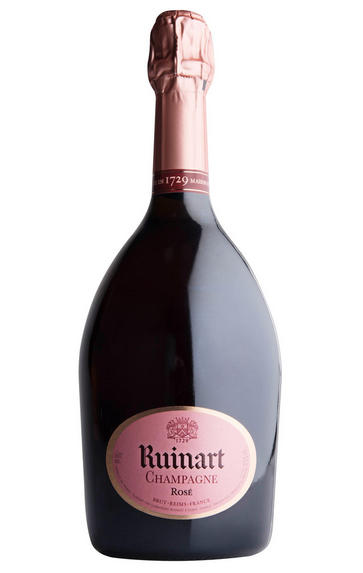
Champagne Ruinart, Rosé, Brut
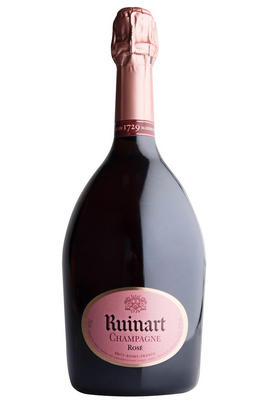
Critics reviews
55% Pinot Noir and 45% Chardonnay; 9 g/l dosage; LAH9V
Light orange. Sharply focused red berry and tangerine scents are complicated by suggestions of allspice and cinnamon, with a hint of smokiness in the background. Sappy and minerally on the palate, offering fresh strawberry and blood orange flavours lifted by juicy acidity. It packs a serious punch but carries no excess weight and finishes stony and very long, with an echoing red berry character.
Josh Raynolds, Vinous.com (January 2015)
Chardonnay and Pinot Noir.
Raspberries and white pepper. Quite sweet – there is something that evokes a long-distant memory of strawberry jelly babies. Pretty fruit and a good, broad swathe of ripe acidity, but lacks the complexity and stature I'd expect of a champagne in this price bracket. It might taste better with a slice of strawberry tart?
Drink 2023 - 2027
Tamlyn Currin, JancisRobinson.com (December 2023)
The latest rendition of Ruinart's NV Brut Rosé is a lovely, vibrant wine that offers inviting aromas of tangerine, blood orange, plum and freshly baked bread. Medium to full-bodied, fleshy and precise, tangy acids and a lovely mousse, it's a ca-harming, comparatively vinous wine already showing well.
Drink 2021 - 2031
William Kelley, Wine Advocate (September 2021)
An enticing properly dry rosé with a slew of red berry aromas, including wild strawberries, but behind this is the structure of a serious Chardonnay from the chalky soils of this region and it is the chalky texture that anchors this on the long finish.
Drink now
Stuart Pigott, Senior Editor for JamesSuckling.com (August 2023)
Dosage: 8g/L
A blend of 55% Pinot Noir and 45% Chardonnay, and featuring around 25% reserve wines, this is 100% premier cru fruit from the Montagne des Reims and Côte des Blancs. Almost a third of the Pinot Noir was vinified as a still wine. A deep coral colour, this is fresh and youthful, with rounded wild red berry fruit, and a hint of rose. With some time in the glass, it develops deeper, more complex, more exotic notes, leading to a long and lively finish.
Drink 2021 - 2026
Amy Wislocki, Decanter.com (January 2021)
About this WINE
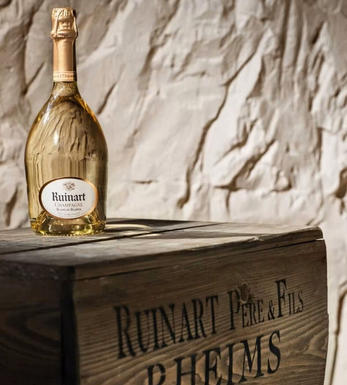
Champagne Ruinart
Ruinart is a low profile, yet select, Champagne house which is steeped in history. It dates back to the 17th century, the time of the famous Dom Pérignon. It was founded in 1729 by Nicolas Ruinart in the city of Reims, the year after a Royal Decree in 1728 whereby Louis XV gave his consent for sparkling wines to be shipped in baskets containing 50 to 100 bottles. This opened the gates of Europe to champagne and thus makes Ruinart the oldest Champagne House. Nicolas' uncle was Dom Thierry Ruinart, close friend to Dom Pérignon himself and an inspiration behind the creation of this house after the Dom’s death. Its Gallo-Roman chalk cellars are now a UNESCO-classified historical monument and every two years the finest sommeliers in Europe gather there to compete for the Trophée Ruinart.
Since the second world war the house has become synonymous with class and its production of only 1.7 million bottles per annum is small compared to other grande marques. It is now part of the LVMH group that also owns Moët & Chandon.
The house style emphasises the pre-eminence of Chardonnay over Pinot Noir and Pinot Meunier.
The 'R' de Ruinart NV contains 40% Chardonnay minimum, with 25% reserve wines. Ruinart Blanc de Blancs is 100% Chardonnay, sourced predominantly from Premier Cru vineyards, while Ruinart Brut Rosé is typically 45% Chardonnay and 55% Pinot, of which 18% is red wine, so following the assemblage, rather than the saignée method of rosé production.
The Dom Ruinart range, named for the spiritual father of the House, represents the prestige cuvées of the house. Dom Ruinart Blanc de Blancs is a Grand Cru Chardonnay, predominantly from the Côte des Blancs (70%) and the remainder from the Montagne de Reims.
Dom Ruinart Rosé champagne has the same basis as the Blanc de Blancs (Chardonnay) to which 15%-20% red wine (Pinot Noir from Verzenay and Verzy) has been added. These are amazingly rich and pure in youth developing red Burgundian notes with long ageing such as in the 1988 or 1990 vintages.
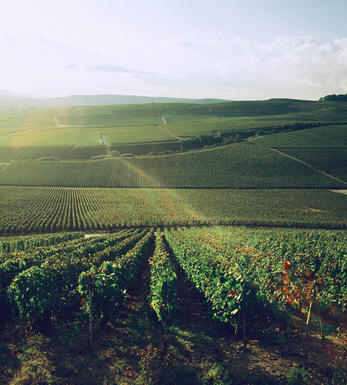
Rosé Champagne
Rosé wines are produced by leaving the juice of red grapes to macerate on their skins for a brief time to extract pigments (natural colourings). However, Rosé Champagne is notable in that it is produced by the addition of a small percentage of red wine – usually Pinot Noir from the village of Bouzy – during blending.
Recommended Producers : Billecart Salmon (Elizabeth Salmon Rose), Ruinart
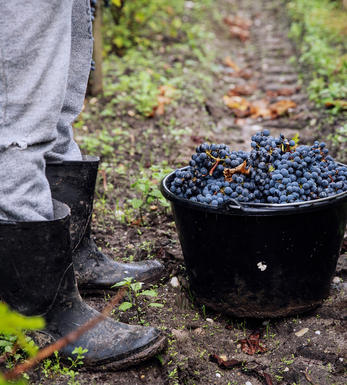
Champagne blend
Which grapes are included in the blend, and their proportion, is one of the key factors determining the style of most Champagnes. Three grapes are used - Pinot Noir, Chardonnay and Pinot Meunier.
26% of vineyards in Champagne are planted with Chardonnay and it performs best on the Côtes des Blancs and on the chalk slopes south of Epernay. It is relatively simple to grow, although it buds early and thus is susceptible to spring frosts. It produces lighter, fresher wines than those from Burgundy and gives finesse, fruit and elegance to the final blend. It is the sole grape in Blancs de Blancs, which are some of the richest long-lived Champagnes produced.
Pinot Noir accounts for nearly 40% of the plantings in Champagne and lies at the heart of most blends - it gives Champagne its body, structure, strength and grip. It is planted across Champagne and particularly so in the southern Aube district.
The final component is Pinot Meunier and this constitutes nearly 35% of the plantings. Its durability and resistance to spring frosts make the Marne Valley, a notorious frost pocket, its natural home. It ripens well in poor years and produces a soft, fruity style of wine that is ideal for blending with the more assertive flavours of Pinot Noir. Producers allege that Pinot Meunier lacks ageing potential, but this does not deter Krug from including around 15% of it in their final blends.


Buying options
Add to wishlist
Description
An enticing properly dry rosé with a slew of red berry aromas, including wild strawberries, but behind this is the structure of a serious Chardonnay from the chalky soils of this region and it is the chalky texture that anchors this on the long finish.
Drink now
Stuart Pigott, Senior Editor for JamesSuckling.com (August 2023)
wine at a glance
Delivery and quality guarantee